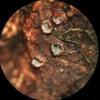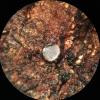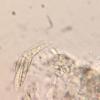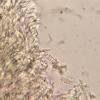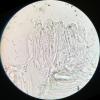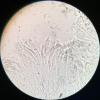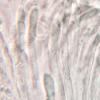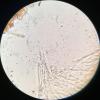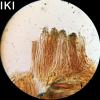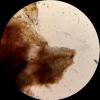
04-11-2025 09:07
Hello.A suspected Hymenoscyphus sprouting on a thi

04-11-2025 12:43
 Edvin Johannesen
Edvin Johannesen
Hi! One more found on old Populus tremula log in O

03-11-2025 21:34
 Edvin Johannesen
Edvin Johannesen
These tiny (0.4-0.5 mm diam.), whitish, short-stip

28-10-2025 15:37
Carl FarmerI'd be grateful for any suggestions for this strik

03-11-2025 16:30
 Hans-Otto Baral
Hans-Otto Baral
Hello I want to ask you if you have found this ye

28-10-2025 19:33
 Nicolas Suberbielle
Nicolas Suberbielle
Bonjour à tous,Je voudrais votre avis sur cette r

31-10-2025 09:19
 Lothar Krieglsteiner
Lothar Krieglsteiner
Can somebody provide me with a file of:Rogerson CT
Karstenia rhopaloides?
Ethan Crenson,
01-12-2024 19:58
Hi all,
Found yesterday by a friend in a wooded park in the Bronx, NYC, on a fallen branch of hardwood (Quercus, Liquidambar, Liriodendron and Prunus are common in those woods).
Clearly erumpent through the bark with a grayish hymenium. Spores are clavate and 4-9 septate. They seem fragile, prone to breaking. 19.5-38.1 x 4.8-6.3µm.
Asci and paraphyses surrounded by a glutinous epithecium which stains blue-green in IKI. Because of the staining of the epithecium it is difficult to tell if the ascus tip blues as well. Still working on that.
Paraphyses slightly constricted at the septa, ends clavate or swollen.
My sense is that this is Karstenia rhopaloides. The spores seem too narrow for K. lonicerae. But maybe rhopaloides is a European species that would not occur in the Bronx?
Ethan
Hans-Otto Baral,
01-12-2024 21:17

Re : Karstenia rhopaloides?
A section of the marginal lobes should show periphysoids that also extend on the sides of the hymenium (unlike Cryptodiscus), but I would exclude that genus also without seeing this feature.
I assume you meant K. lonicerae has narrower spores.
I mainly know that an apical ring reacts blue and the outer ascus wall hemiamyloid (blue then red during iodine diffusion), not the exudate/epithecium.
Ethan Crenson,
02-12-2024 04:21
Re : Karstenia rhopaloides?
Thank you... yes I did mean K. lonicerae has narrower spores. I will call this K. rhopaloides. It seems fairly safe to do that.

